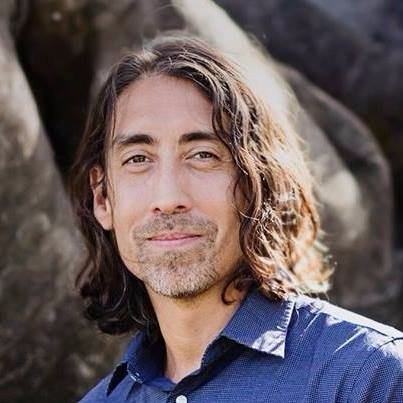By Sayer Ji
Contributing writer for Wake Up World
The power of medicinal mushrooms to heal, including actively combating cancer, is supported by a solid body of human clinical research. How is it that they possess such immense therapeutic activity? And why have they been ignored by the conventional medical system?
Over the course of the past few years, we have uncovered a remarkable body of research on the medicinal properties of mushrooms. Some of these studies we have reported on in greater depth in previous writings, focusing on how they: treat HPV infection, boost immune function, produce vegan vitamin D3, lower PSA (prostate-specific antigen) levels in men, and boost brain function.
These examples, while impressive, are only the tip of the iceberg. At GreenMedInfo.com, we have identified over 200 conditions that may benefit from them, as well as over 100 different beneficial effects they can induce through the modulation of various physiological systems and pathways within the body, e.g. immunomodulatory, anti-proliferative, anti-inflammatory. (You can search through the primary literature we have gathered on the topic on the Medicinal Mushroom research portal.)
While many already know that edible mushrooms have significant nutritional value, few are yet aware of just how powerful they can be in mitigating serious health conditions. In fact, when it comes to natural cancer research, no other category has been the subject of more human clinical research than AHCC and Lentinan, both unique preparations of shiitake mushroom.
AHCC stands for active hexose correlated compound, and is classified as a functional food made from hybridized mycelia of shiitake (and sometimes other mushrooms) in rice bran. It contains both alpha- and beta-glucan polysaccharides, well-known modulators of host immunity. Lentinan, also from shiitake (Lentinula edodes), is comprised exclusively beta-glucan. What is so unique about these compounds is that they are “host-mediated” anti-cancer agents, helping the cancer-afflicted body combat cancer by boosting immune function. This is a radically different approach versus conventional chemotherapy and radiation, which causes DNA damage in rapidly dividing cells, indiscriminately, damaging, mutating, and/or killing both cancer and immune cells (among other healthy cell types). Also, conventional treatment enriches cancer stem cells, which inevitably leads to cancer recurrence and the development of more lethal cancer phenotypes.
Why Do “Medicinal Mushrooms” Heal?
How can edible mushrooms like shiitake protect us against cancer, perhaps the most widely feared disease that presently afflicts our species? One explanation is that we co-evolved with fungi, and the essential polysaccharides (including their bio-informational content) they contain were present in our diet for so long that the genetic/epigenetic infrastructure of our bodies now depends on them. Beta-glucan, after all, is found widely distributed in whole grains, nutritional yeast, as well as fungi. The friendly microbes, in and outside of our gut, produce the beta-glucan fraction through the biotransformative processes of digestive fermentation and, in the case of food, culturing. Could it be that, failing to consume (or produce) adequate quantities, our body fails in its cancer immunosurveillance? This is also observable in the well-established role that vitamin D deficiency has in maintaining proper immune function, and therefore reducing cancer risk. So why would it not also be true for compounds that have existed in the human diet since time immemorial?
Perhaps there is another reason why fungi keep us alive and well, even when faced with the most terrible of health challenges: we share a common, unique evolutionary origin, and our destinies therefore may still be intimately interwoven.
The microbiologist Mitchell Sogin was interviewed back in 2004 on this topic:
“Animals and sponges share a common evolutionary history from fungi…
… we thought fungi were related to plants or somehow were just colorless plants. Plants had seeds, fungi had spores, and so on. Scientists used to publish fungi articles in plant journals. But the work does not support that. We’ve shown that fungi and plants are very different from each other, and fungi are actually more closely related to animals.”
When asked the question: “Does all this mean humans are just highly evolved mushrooms?” Sogrin answered: “I’d say we share a common, unique evolutionary history with fungi. There was a single ancestral group of organisms, and some split off to become fungi and some split off to become animals.”
Could Medicinal/Edible Mushrooms “Lend Us Their Power”?
In certain traditions of herbalism, there is an acknowledgment of the sacred bonds that exist between humankind and herbs, where plants lend us their power, making them “plant allies.” Beyond nutritional and caloric content, biochemical make-up, pharmacology, etc., certain fungi may embody the biological equivalent of compassion, and exude an abundance or superfluity of life energy that we may harness to correct imbalances within ourselves. First, we must be willing to acknowledge that power in a source outside of ourselves, which is difficult for egocentric, anthropocentric humans to do. Second, we must consider ourselves worthy of the miracle of being healed, of life regenerating itself through us.
To learn more about the sacred bond between fungi and humanity, as well as how “mushrooms may save the world,” please watch Paul Stamet’s amazing video on the topic below.
Paul Stamets: 6 Ways Mushrooms Can Save the World
Recommended articles by Sayer Ji:
- The Powerful Aspirin Alternative Your Doctor Never Told You About
- 13 Evidence-Based Medicinal Properties of Coconut Oil
- Group Drumming Better Than Prozac, Study Suggests
- 25 Cancer Stem-Cell Killing Foods That Are Smarter Than Chemo and Radiation
- Ibuprofen Can Stop Your Heart – 31% Increase in Cardiac Arrest Risk
- How Pomegranate Puts Chemo and Radiation to Shame
- Dramatic Recovery in Parkinson’s Patient with Gluten Free Diet
- 6 Bodily Tissues That Can Be Regenerated Through Nutrition
About the author:
Sayer Ji is the founder of Greenmedinfo.com, a reviewer at the International Journal of Human Nutrition and Functional Medicine, Co-founder and CEO of Systome Biomed, Vice Chairman of the Board of the National Health Federation, and Steering Committee Member of the Global Non-GMO Foundation.
For more, visit GreenMedInfo.com and Facebook.com/GreenMedInfo, or sign up for GreenMedInfo’s free e-Newsletter.
© July 25th, 2016 GreenMedInfo LLC. This work is reproduced and distributed with the permission of GreenMedInfo LLC. Want to learn more from GreenMedInfo? Sign up for their newsletter here.

If you've found value in our articles, we invite you to support the release of our brand-new book, "Gratitude Practices for Kids: A Practical Guide for Adults to Instill a Spirit of Appreciation and Positivity in the Next Generation."
"Gratitude Practices for Kids" brings together over 25 innovative and accessible practices designed to enhance gratitude in everyday life. This comprehensive guide is backed by 17 scientific studies, ensuring each concept is grounded in research, underscoring our commitment to nurturing growth, emotional intelligence, and positive interactions between adults and children.
We encourage you to opt for the paperback version to celebrate this new release. Dive into its fresh pages away from digital distractions, allowing you to immerse yourself in the transformative practices it offers.
Over recent years, Wake Up World has faced significant online censorship, which has impacted our financial ability to operate. Moving into book publishing represents a strategic step to secure the ongoing funds needed to continue our mission. By purchasing Gratitude for Kids, you help us keep our content free and accessible to everyone, avoiding needing a paywall. With over 8,500 articles published in the last 13 years, we remain dedicated to keeping our valuable content open to all.









